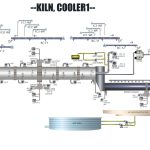In the thunderous landscape of steel mills where molten metal meets precision engineering, a quiet revolution is transforming how we approach quality control. The age-old challenge of ensuring flawless billets and slabs, the critical foundation of all steel products, has found its answer in the convergence of artificial intelligence and machine vision technology.
The stakes couldn’t be higher. In an industry where even microscopic defects in billets and slabs can cascade into catastrophic structural failures, the traditional methods of quality inspection have reached their limits. Human inspectors, no matter how skilled, cannot match the relentless precision and 24/7 vigilance that modern steel production demands.
Contents
- 1 Why Billet and Slab Quality Control Demands Revolution
- 2 The Intelligent Eye That Never Blinks
- 3 AI-Powered Defect Detection
- 4 Real-Time Process Integration
- 5 The integration of machine vision systems into existing steel production lines represents a masterclass in smart manufacturing implementation. These systems operate continuously, inspecting every billet and slab without disrupting production flow or reducing line speeds.
- 6 Beyond Basic Defect Detection
- 7 The Strategic Approach
- 8 The Future of Steel Quality Control
- 9 The evolution of machine vision technology continues to drive innovation in steel quality control, with emerging capabilities that promise even greater accuracy, efficiency, and operational intelligence.
- 10 The Human Element in Smart Manufacturing
- 11 Partnering for Quality Excellence
- 12 Author
Why Billet and Slab Quality Control Demands Revolution
Steel billets and slabs represent the DNA of every steel product that shapes our world, from the skeleton of skyscrapers to the chassis of vehicles. These semi-finished products, typically measuring 160mm x 160mm for billets or larger dimensions for slabs, must exhibit perfect dimensional accuracy, surface integrity, and structural soundness.
The challenge is multifaceted. Traditional manual inspection methods suffer from inherent limitations: human fatigue leads to inconsistent detection rates as low as 60-70% throughout an 8-hour shift, harsh working conditions near furnaces operating at temperatures exceeding 900°C make sustained inspection nearly impossible, and the high-speed nature of continuous casting lines, processing multiple tons per minute, creates an inspection bottleneck that manual methods simply cannot match.
The economic impact of defective billets and slabs extends far beyond the immediate production line. When surface defects like longitudinal cracks, transverse pits, rhomboidity, or bulging go undetected, they propagate through subsequent rolling processes, potentially compromising entire batches of finished products. The cost of rework, material waste, and customer complaints can reach millions of dollars annually for large steel producers.
The Intelligent Eye That Never Blinks
Machine vision technology has emerged as the definitive solution for steel billet and slab quality control, combining high-resolution imaging, artificial intelligence, and real-time processing capabilities to deliver unprecedented inspection accuracy and speed.
At its core, a comprehensive machine vision system for billet and slab inspection integrates multiple sophisticated components working in perfect harmony. High-resolution line-scan cameras, capable of capturing images at speeds exceeding 200 kHz line rates with up to 32K pixel resolution, ensure complete surface coverage even at high production speeds. These cameras work in conjunction with specialized lighting systems, including blue light sources and laser illumination specifically designed for high-temperature metal inspection, to reveal defects that would be invisible to the human eye.
The technological sophistication extends to the optical systems themselves. Advanced filtering mechanisms eliminate interference from the intense infrared radiation emitted by hot steel, while multi-angle camera configurations provide comprehensive 360-degree inspection coverage. This multi-perspective approach is crucial for detecting defects on all surfaces of billets and slabs, including hard-to-reach areas and irregular geometries.
AI-Powered Defect Detection
The true power of modern machine vision systems lies in their artificial intelligence capabilities. Deep learning algorithms, trained on vast datasets of defect images, can identify and classify a comprehensive range of surface imperfections with accuracy rates exceeding 98%.
These AI systems excel at detecting the most common and critical defects in billet and slab production. Surface defects such as longitudinal cracks, transverse cracks, scabs, roll marks, pits, scratches, and inclusions are automatically identified and classified by severity. Dimensional defects, including rhomboidity, bulging, and dimensional variations, are measured with sub-millimeter precision using advanced 3D laser profiling technology. Manufacturing defects like improper cut flatness, presence of burrs, and foreign material inclusions are detected in real-time, preventing their progression to downstream processes.
The sophistication of AI-powered inspection extends beyond mere detection. Modern systems employ convolutional neural networks (CNNs) and support vector machines (SVMs) to continuously learn and adapt their defect recognition capabilities. This adaptive learning ensures that the system becomes increasingly accurate over time, automatically adjusting to variations in steel grades, surface conditions, and production parameters.
Real-Time Process Integration
The integration of machine vision systems into existing steel production lines represents a masterclass in smart manufacturing implementation. These systems operate continuously, inspecting every billet and slab without disrupting production flow or reducing line speeds.
Real-time data processing capabilities enable immediate quality decisions. When defects are detected, the system automatically triggers alerts to operators, updates quality databases, and can even initiate automatic rejection mechanisms to remove defective products from the production line. This immediate response capability prevents defective material from progressing to costly downstream processes.
The data integration capabilities extend throughout the entire production ecosystem. Machine vision systems communicate seamlessly with plant management systems, providing real-time quality metrics, trend analysis, and predictive insights that enable proactive process optimization. This connectivity supports the broader Industry 4.0 initiative, where interconnected smart systems work collaboratively to optimize overall plant performance.
Beyond Basic Defect Detection
Modern machine vision systems for billet and slab inspection extend far beyond basic defect detection, incorporating sophisticated measurement and analysis capabilities that support comprehensive quality assurance protocols.
Three-dimensional measurement capabilities provide precise dimensional analysis, detecting deviations in thickness, width, length, and geometric regularity with sub-millimeter accuracy. This dimensional inspection is critical for ensuring that billets and slabs meet the strict tolerances required for subsequent processing operations.
Temperature monitoring integration allows simultaneous quality and thermal analysis. Infrared imaging capabilities can detect temperature variations across billet and slab surfaces, identifying cooling irregularities that might affect material properties or indicate process issues. This thermal analysis capability is particularly valuable in continuous casting applications where temperature control directly impacts product quality.
Automated identification and tracking systems utilize optical character recognition (OCR) and barcode reading capabilities to ensure proper product identification and traceability throughout the production process. This traceability is essential for quality control documentation and helps maintain the chain of custody for critical applications.
The Strategic Approach
Successful implementation of machine vision systems for billet and slab quality control requires a strategic approach that addresses both technological and operational considerations.
The phased implementation strategy begins with a comprehensive assessment of existing production lines, quality requirements, and integration points. This assessment ensures that the machine vision system design aligns with specific operational needs and production constraints. Custom lighting design, camera positioning, and software configuration are optimized for each unique installation environment.
Integration with existing plant systems requires careful coordination to ensure seamless data flow and operational compatibility. Modern machine vision systems are designed with flexible interfaces that can integrate with various plant automation systems, quality management databases, and enterprise resource planning (ERP) systems.
Operator training and change management are critical success factors. While machine vision systems automate inspection processes, operators must understand system capabilities, alert responses, and maintenance requirements. Comprehensive training programs ensure that plant personnel can maximize system benefits while maintaining operational excellence.
The Future of Steel Quality Control
The evolution of machine vision technology continues to drive innovation in steel quality control, with emerging capabilities that promise even greater accuracy, efficiency, and operational intelligence.
Artificial intelligence advancement includes more sophisticated deep learning models that can predict quality issues before they occur, based on subtle patterns in production data. These predictive capabilities will enable proactive process adjustments that prevent defects rather than simply detecting them.
Enhanced connectivity features support the broader Industry 4.0 ecosystem, where machine vision systems communicate with other smart manufacturing technologies to optimize overall plant performance. This integration enables advanced capabilities like dynamic process optimization, where inspection results automatically trigger adjustments to casting parameters, cooling systems, or material handling equipment.
Digital twin technology integration allows virtual modeling of quality processes, enabling scenario testing and optimization without disrupting actual production. This capability supports continuous improvement initiatives and helps optimize system performance over time.
The Human Element in Smart Manufacturing
While machine vision technology automates inspection processes, the human element remains crucial for maximizing system benefits and driving continuous improvement. Skilled technicians and metallurgists work alongside AI systems, interpreting results, optimizing parameters, and identifying opportunities for process enhancement.
The transformation enables steel professionals to transition from routine inspection tasks to higher-value activities focused on process innovation, quality system optimization, and strategic quality management. This evolution enhances job satisfaction while improving overall plant performance and competitiveness.
Partnering for Quality Excellence
The revolution in billet and slab quality control through machine vision technology represents more than just a technological upgrade; it’s a fundamental transformation that positions steel manufacturers for success in an increasingly competitive and quality-conscious market.
As the steel industry continues to embrace digital transformation and smart manufacturing principles, the companies that successfully implement and optimize machine vision technology will gain significant competitive advantages through improved quality, reduced costs, and enhanced operational efficiency.
For steel manufacturers ready to transform their quality control operations, Epsum Labs stands ready to deliver comprehensive machine vision solutions tailored to the unique demands of billet and slab inspection. With deep expertise in steel manufacturing processes, cutting-edge AI technology, and proven implementation methodologies, Epsum Labs provides the strategic partnership necessary to achieve quality excellence in the Industry 4.0 era.
The future of steel quality control is here: intelligent, autonomous, and relentlessly accurate. The question isn’t whether to embrace this transformation, but how quickly your organization can implement these game-changing capabilities to secure its competitive position in the smart manufacturing landscape.




